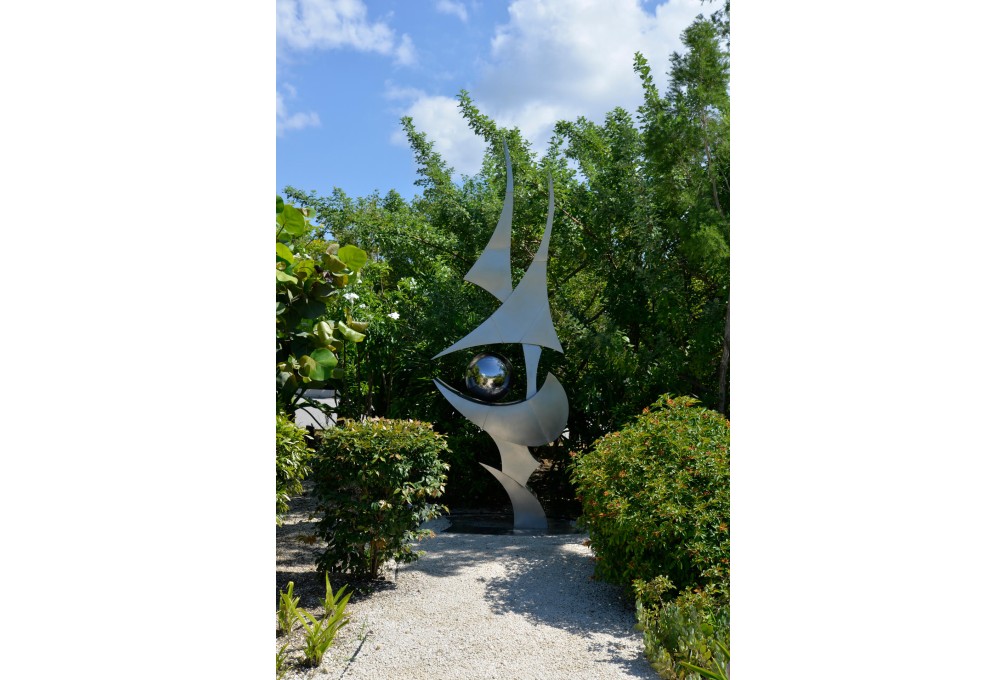
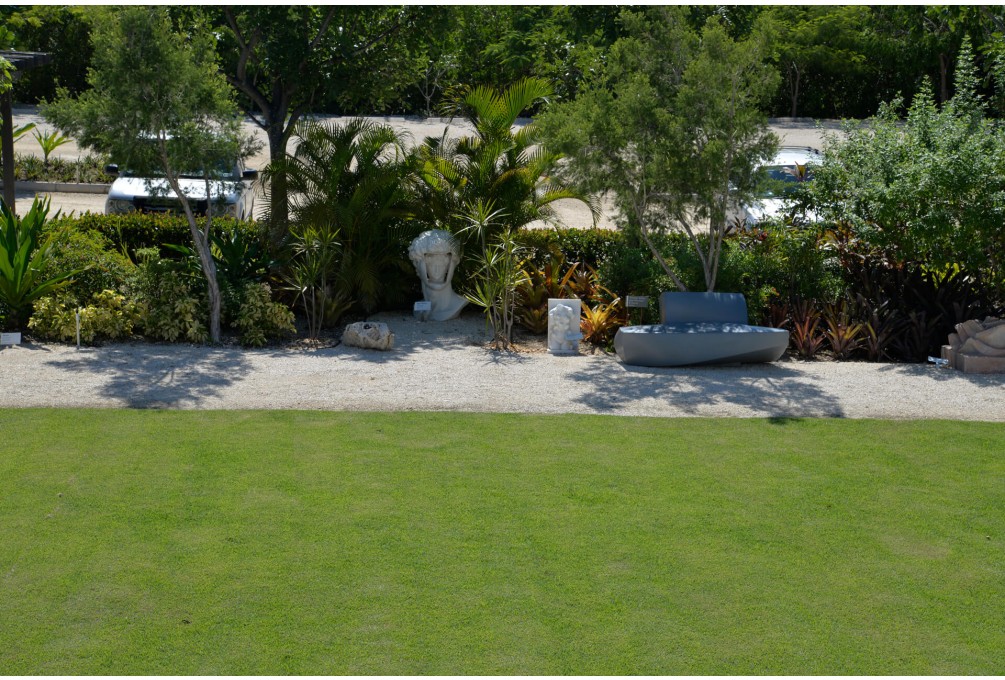
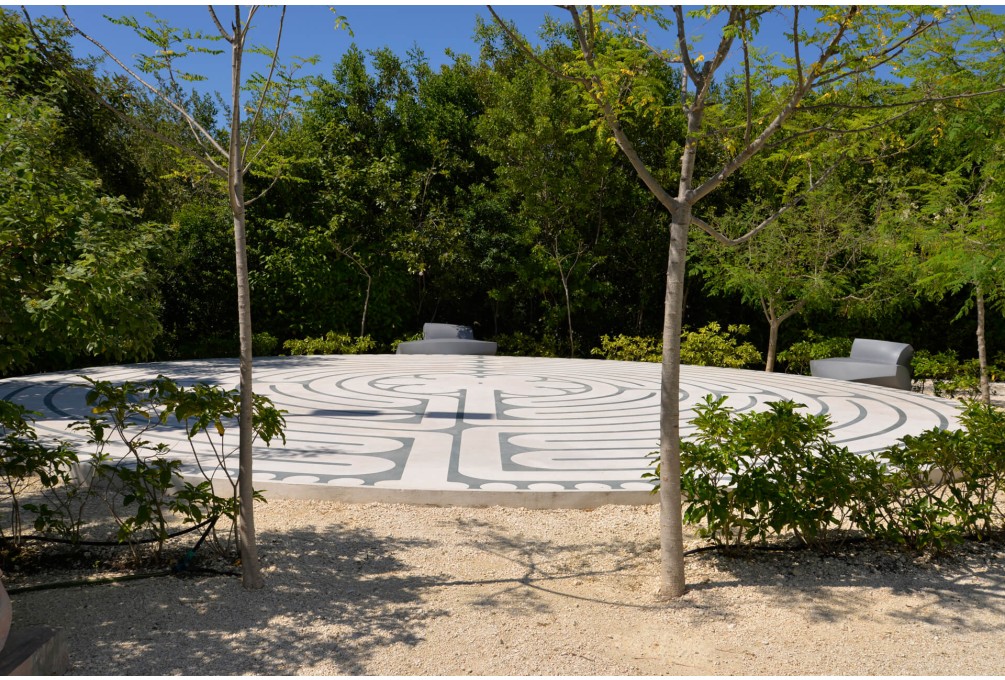
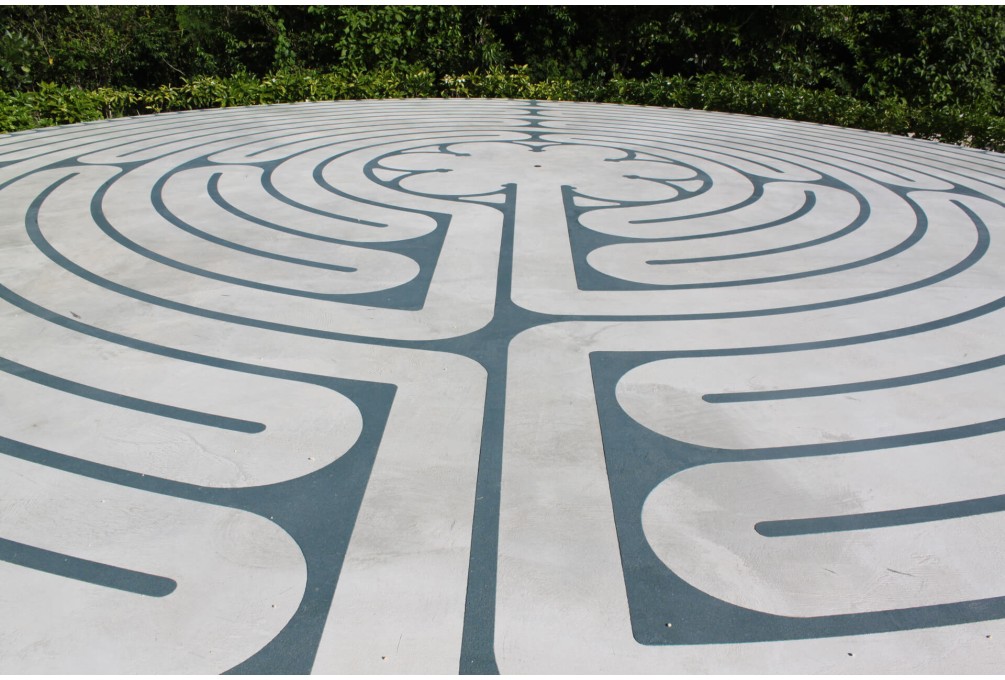
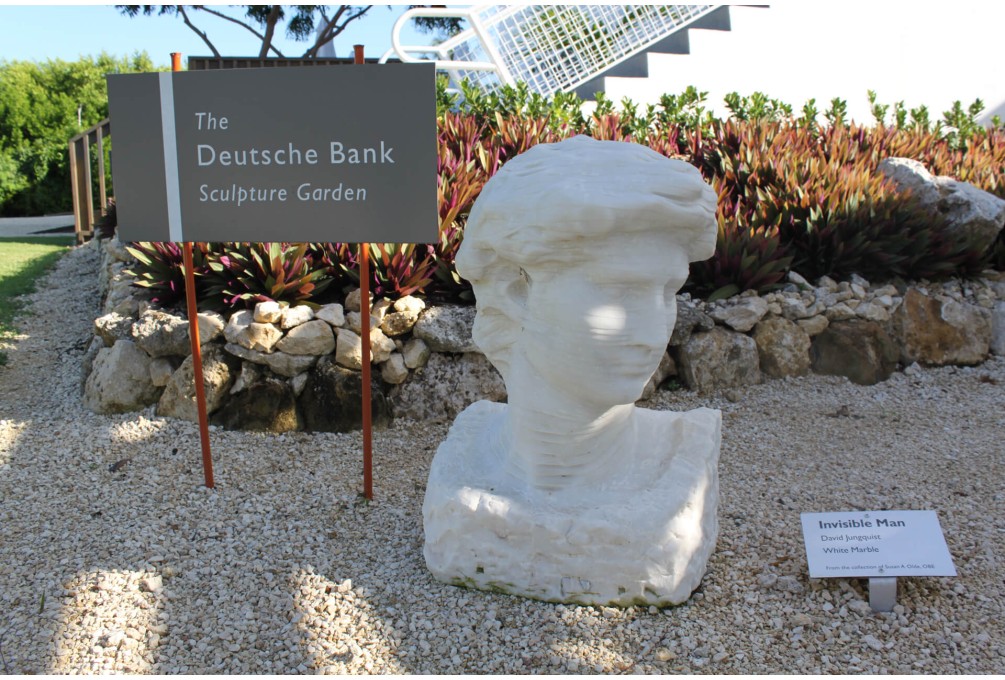
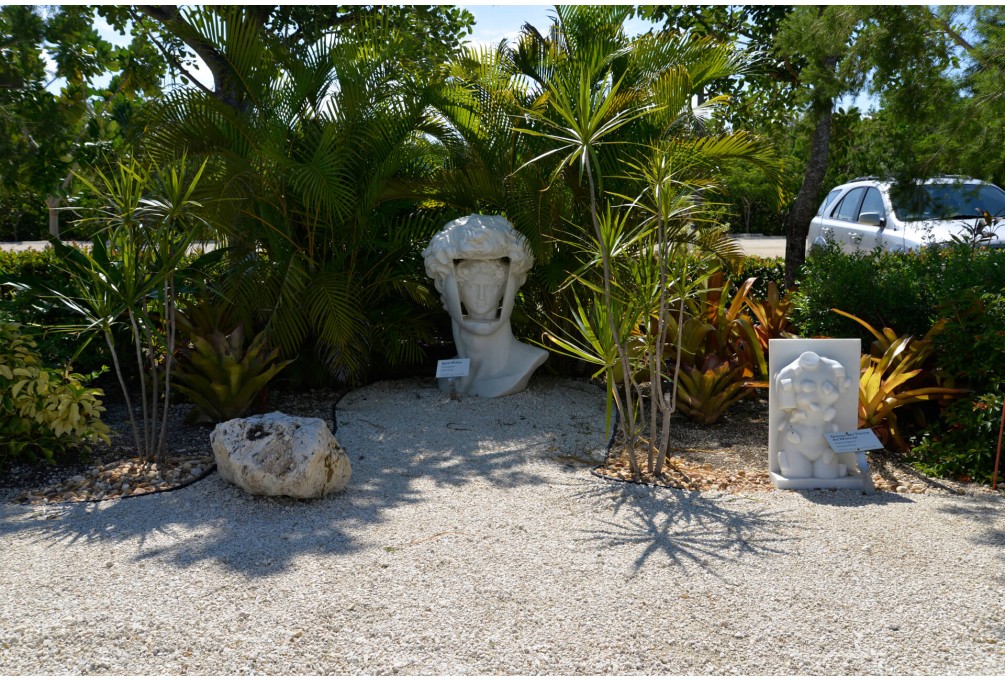
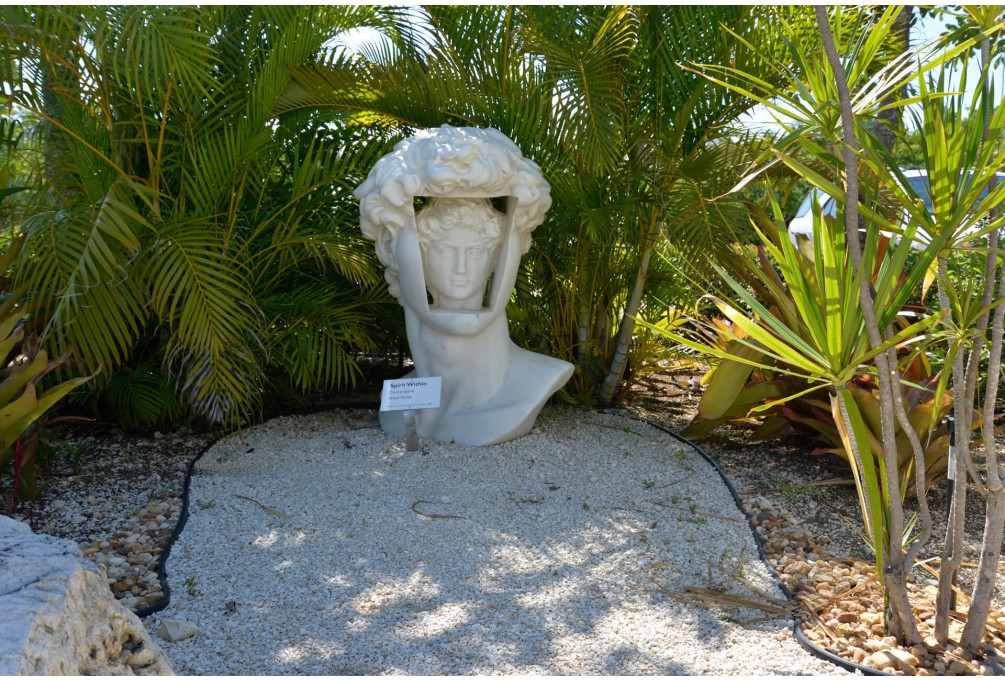
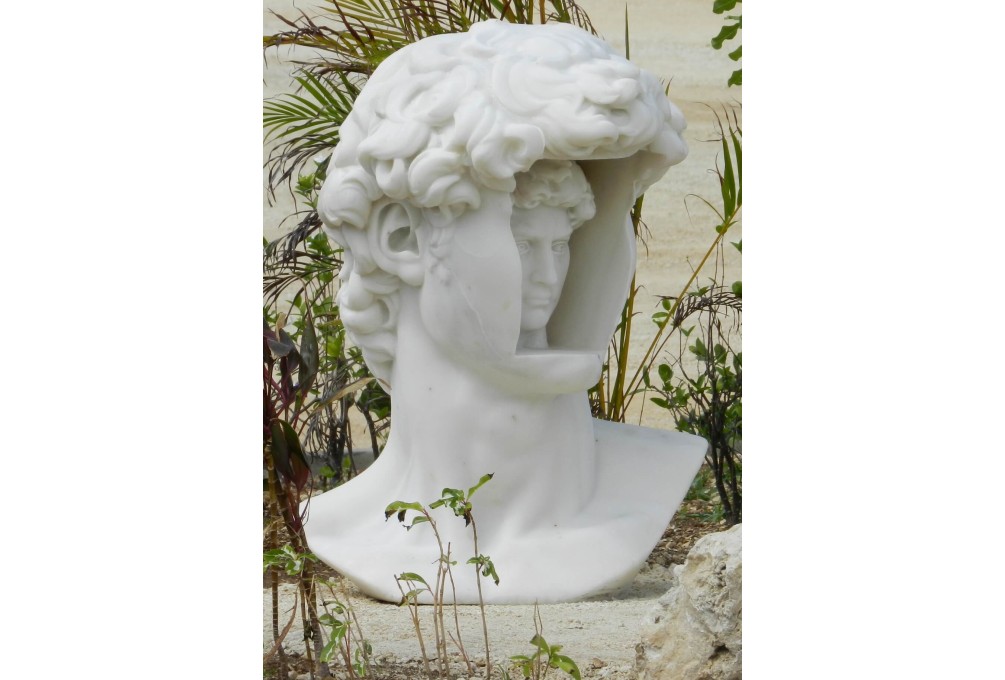
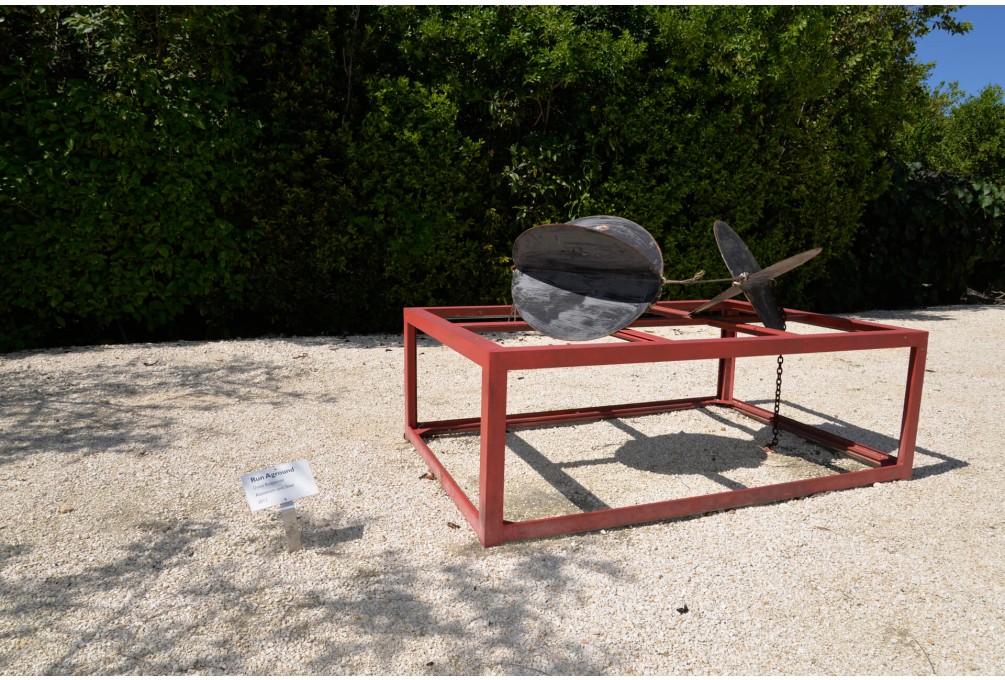
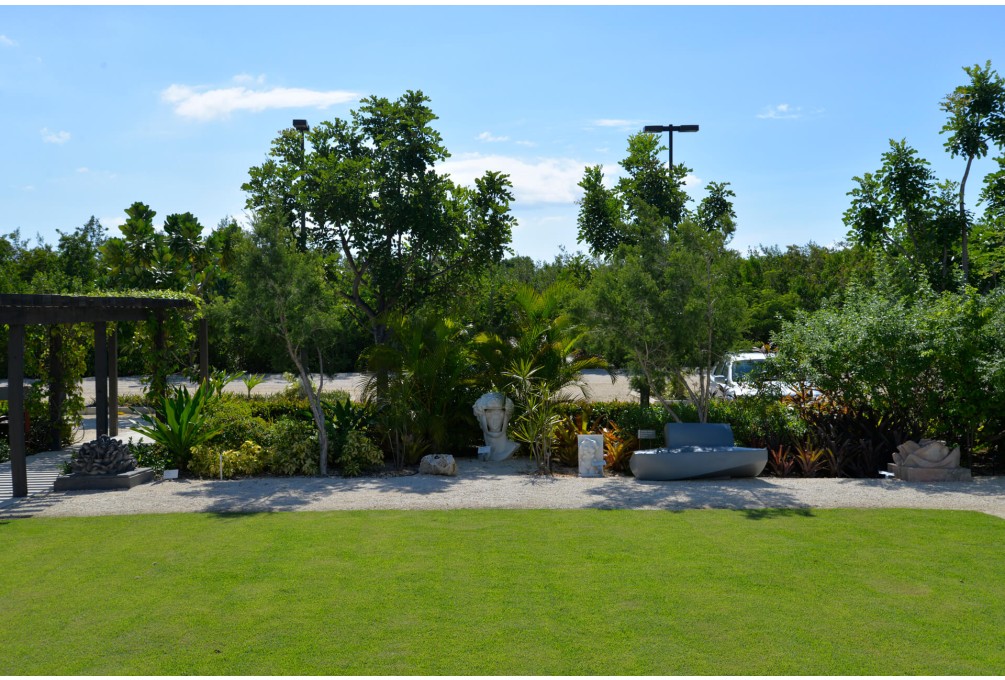
A global supporter of the arts, Deutsche Bank has built up its own collection of more than 55,000 works of art, one of the biggest corporate art collections in the world. The Deutsche Bank Sculpture Garden is the National Gallery’s ‘outdoor art gallery’, the first in the Cayman Islands. It provides a distinctive setting for permanent sculptural displays along with rotating works by local artists. It runs through the centre of the lower terrace at the back of the Education Centre and, standing at building level, visitors can enjoy an overview of the entire garden. This design provides an open flexible stage surrounded by several smaller individual gardens and the multi-purpose area. It has, within its forms and arrangement, the ability to grow and convert itself to the demands of the community.
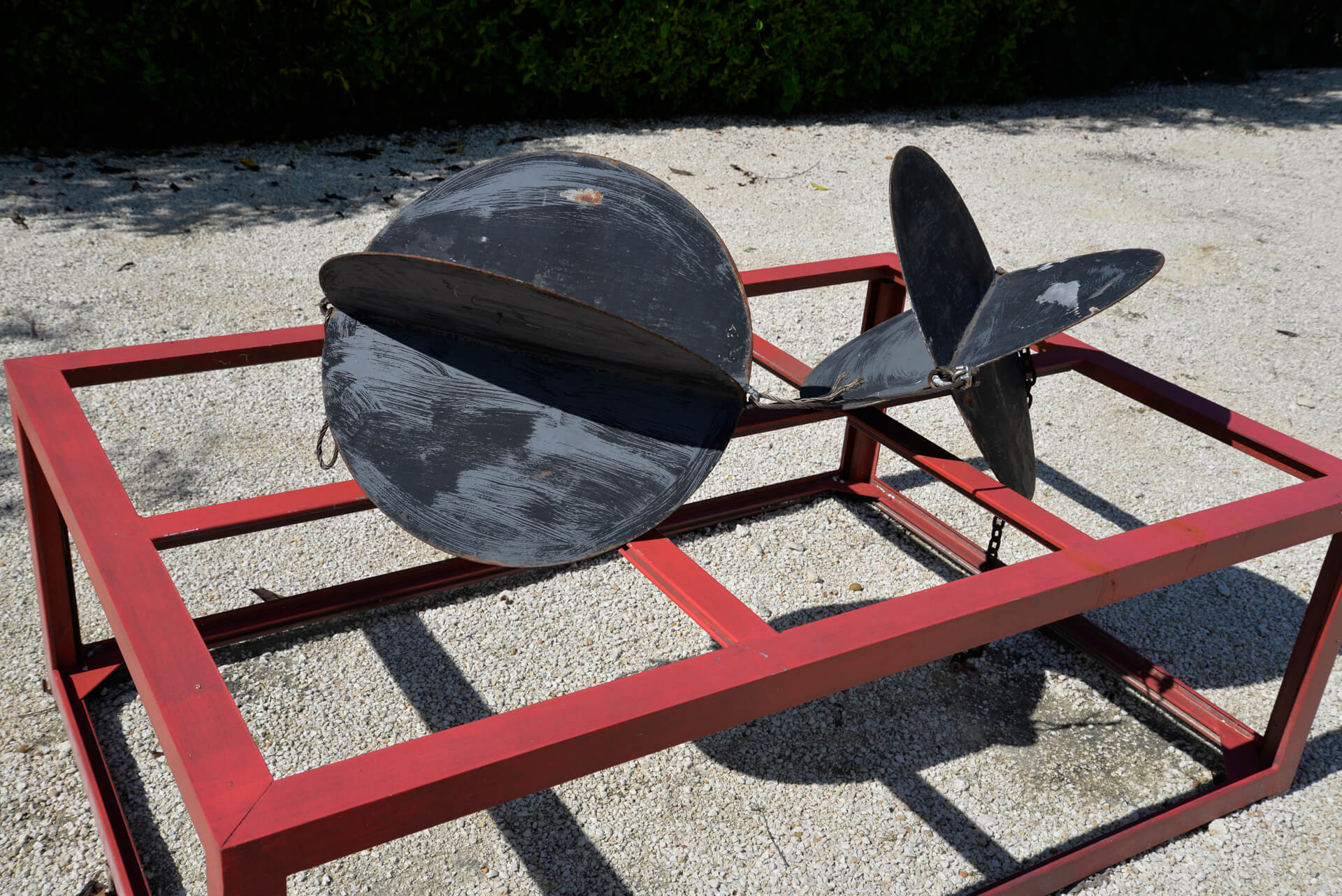
David Bridgeman
David Bridgeman considers himself more of a painter, but enjoys making things that inspire and provide a focus for his drawings and paintings. “I am interested in structures in the environment, whether man-made or natural, and where possible will collect objects that remind me of what I have seen. In 2011 I stumbled upon an old dredging ship moored at the very tip of the landfill site on the North Sound. An oil leak rendered it a possible environmental hazard and it was moored waiting to be scrapped. On its rusted red-painted deck I found some objects that were wonderfully aged but intact and lying useless, and was given permission to remove them before scrapping commenced. The opening of the National Gallery of the Cayman Islands in 2012 provided an opportunity for me to use them as a sculpture for the newly designed sculpture garden. As with my other installations or 3D work, they continue to provide me with inspiration for other paintings, drawings or prints. In a very simple way the objects quietly stand as a memory to an important era in Grand Cayman’s marine heritage and the part played by this ship in the development of the island.”
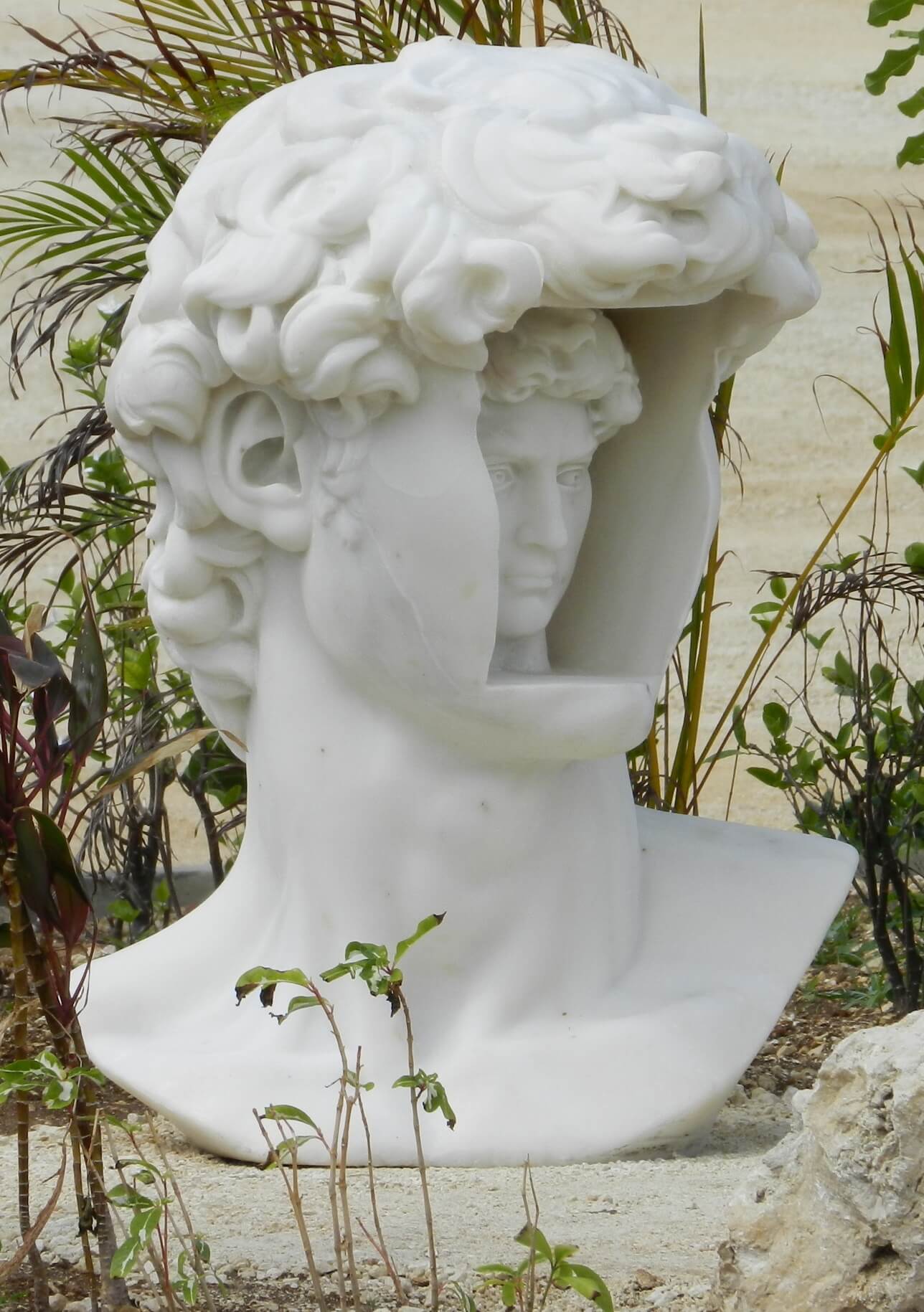
David Junquist
David Junquist was born as Jung Gweehak in Pusan, South Korea. He lived in Seoul briefly, and grew up in the beautiful, small town of Bedford Hills in Westchester County, New York. David’s work ranges from life-like figurative works to delicate abstract pieces and everything in between, in a range of materials such as marble, bronze and wood. “As an artist I’m very eclectic. I don’t really have one direction, but that’s the way I am. I don’t feel I can define myself in one culture, language or form. I create like an art student, for the pure enjoyment of it.” David’s work has been exhibited extensively worldwide over the past 25 years including in Italy, China, USA and the Cayman Islands. David began his study of painting and sculpture in New York, where he received a Ford Foundation grant and graduated from Pratt Institute with honors. He lived in Italy for 20 years, and later went to school in China and opened a studio in Beijing. He currently lives near Aspen, Colorado with his wife and kids where he also owns a studio.
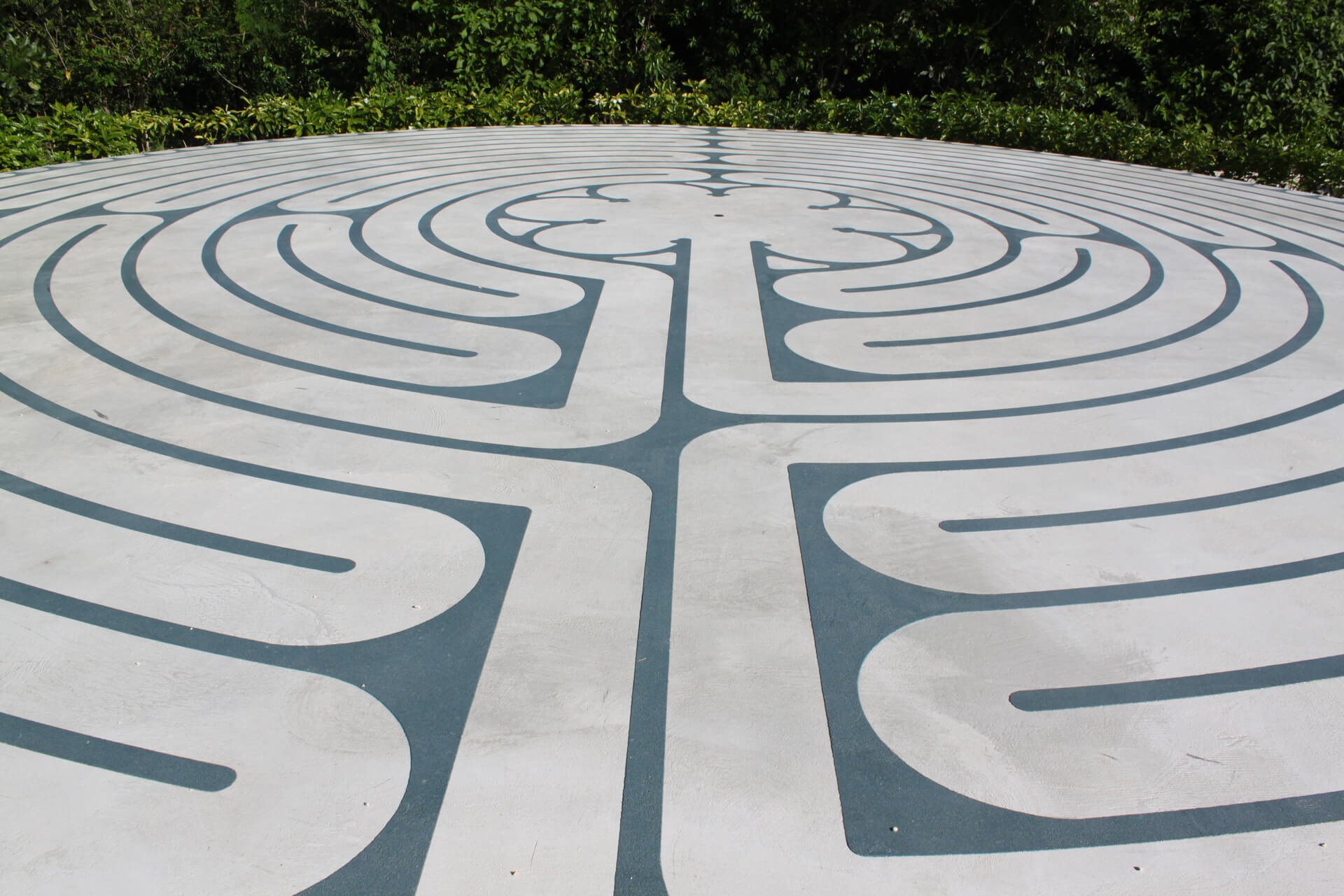
Dianne Siebens
Named after project sponsor Dianne Siebens, the Labyrinth is available for use by the entire community. The Labyrinth is a universal symbol found across many cultures and religions and dates as far back as 2000 BC. Historically people have walked Labyrinth’s as a form of pilgrimage. Today, people walk the labyrinth for many reasons: to relax, as a form of walking meditation – to find peace and calm— to unlock creativity, to recognise significant religious dates like Lent or Advent, for weddings and special occasions, and sometimes just for fun. The pattern used at the NGCI is a re-creation and replica of a Christian labyrinth built in 1201, in accordance with Sacred Geometry, in the Medieval Cathedral of Notre Dame de Chartres, France. As with earlier labyrinths, this design serves as a symbolic path designed to calm, focus and provide stillness for the mind. It follows a single, non-branching path, which leads to the centre and out again. This differentiates the pattern from a maze which has a complex branching puzzle with choices of path and direction.
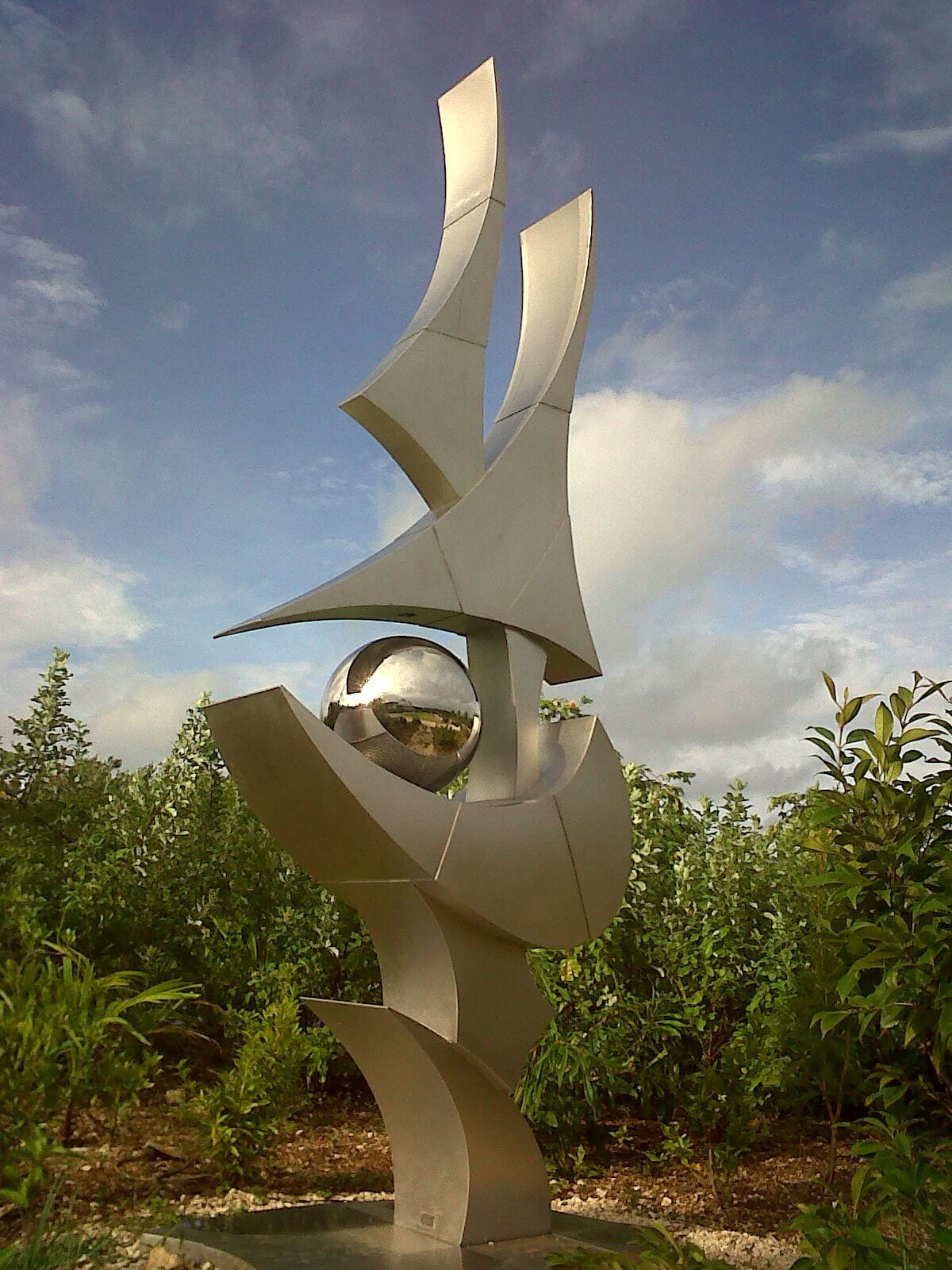
Housi Knecht
Swiss sculptor Housi Knecht is a celebrated artist who is world-renowned for his designs in iron and steel. He was born in Bern in 1951, emigrated to Australia as a mechanic, but returned to Bern in 1971 to open his first studio. Knecht’s sculptural fountain, Sails was generously donated by Mr and Mrs Otto Model. The sculpture is dramatic as it is approximately six feet in height and contains a steel sphere over which water peacefully spills, hugging its shape, while illuminated from above. Housi Knecht is known for his sensual use of the hard metals and his ability to manipulate them into soaring and flowing shapes which express elegance and movement. He likes to incorporate the forces of nature such as fire or light, water, and metal into harmonious works that are pleasing to behold in their entirety. His sculptures are visually stimulating by their grand size and balanced proportions.